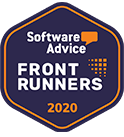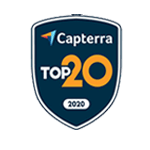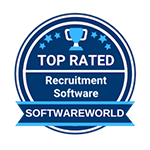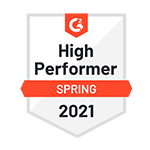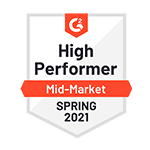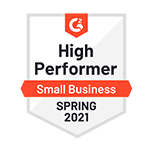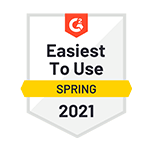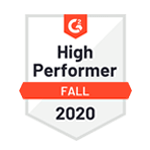Ever imagined the world without technology in the recruitment process. Sifting through countless resumes, manual matching of skills to roles, and endless hours of phone calls and emails, the process would be much longer than the current 24-day cycle.
Here comes the Recruitment Management Software (RMS). It has revolutionized the way businesses handle the recruitment process. From automating the selection process to streamlining communication with candidates, RMS has made recruitment a lot more efficient and effective. In this article, we will explore the various aspects of RMS, including how it works, its key features, its functions as a CRM, the benefits of using it, and how to choose the right one for your organization. Whether you’re looking to streamline your recruitment process or increase your hiring efficiency, this article will provide you with a comprehensive understanding of RMS and how it can benefit your business.
What is Recruitment Management Software?
Recruitment Management Software (RMS) is a type of software that automates and streamlines the recruitment process, helping businesses find, attract, and hire the right candidates for their open positions. With features such as job posting, candidate tracking, resume management, and interview scheduling, RMS reduces manual effort, increases efficiency, and improves the candidate experience. The software can be integrated with other HR systems, providing a unified solution for managing the recruitment process and making informed decisions.
Benefits of Recruitment Management Software
Recruitment Management Systems (RMS) are technology-based solutions designed to support the recruitment process of organizations. They provide a range of benefits that can help to streamline the recruitment process, increase efficiency, and improve overall performance.
Improved Efficiency: Recruitment management software streamlines the recruitment process, reducing the time and effort required to manage the process manually. Recruitment is a time-consuming and resource-intensive process that often involves multiple stages, including job postings, resume screening, interviewing, and candidate selection.
An RMS can automate many of these tasks, reducing the time and effort required to complete them. This can result in a more streamlined and efficient recruitment process, freeing up time for recruiters to focus on other tasks.
Better Candidate Experience: Recruitment management software also enhances the candidate experience by providing a seamless and efficient process. RMS provides a centralized platform for candidates to apply, communicate with recruiters, and receive updates on their application status. It also increases the likelihood of attracting high-quality candidates.
Quality of Hires: An RMS can also help to improve the quality of hires. These systems often include tools for screening resumes, tracking candidate progress, and analyzing data on past hires. By using these tools, recruiters can make more informed hiring decisions, leading to higher-quality hires that are better suited to the needs of the organization.
Enhanced Collaboration: Many organizations have multiple recruiters and hiring managers involved in the recruitment process. An RMS can help to improve communication and ensure that everyone is working together effectively. For example, recruiters can use the system to share information with hiring managers and receive feedback on candidate selections.
Increased Productivity: By automating many of the manual tasks associated with recruitment, the software frees up recruiters to focus on more important tasks, such as sourcing and interviewing candidates.
Access to Data and Analytics: Finally, the software provides access to valuable data and analytics, allowing organizations to track key recruitment metrics, such as time-to-hire, cost-per-hire, and candidate sourcing efficiency
Cost effective: An RMS can also help to reduce costs. By automating tasks and reducing manual labor, these systems can reduce the number of staff required to perform certain tasks. This can result in significant cost savings for organizations, freeing up resources for other investments. To be more cost effective you can even find free trial ATS. (0001.2).
Labor & Law Compliance: An RMS can also help to ensure compliance with employment laws. Recruitment processes must comply with a range of laws, such as anti-discrimination laws and equal opportunity laws. An RMS can help to ensure compliance by providing guidance on the recruitment process and tracking candidate information to ensure that all candidates are treated fairly and equitably.
An RMS can offer a range of benefits to organizations looking to streamline their recruitment process. From increased efficiency and improved candidate experience to improved quality of hires and cost savings, these systems can help organizations to achieve their recruitment goals more effectively. Whether you are a recruiter looking to improve your work processes, or a business owner looking to increase efficiency and competitiveness, an RMS is an investment worth considering.
How does Recruitment Management Software Work?
Recruitment is a critical aspect of any business as it involves finding, attracting, and hiring the right talent to support the organization’s growth and success. However, recruitment can also be a time-consuming and complex process, which is why recruitment management software has become an indispensable tool for many organizations.
Recruitment management system automates many of the manual tasks associated with the recruitment process, including job posting, resume screening, interview scheduling, and candidate communication. The software integrates all of these tasks into a single platform, allowing recruiters to manage the entire process from one centralized location.
Here’s a closer look at how recruitment management software works:
- Job Posting: The software allows recruiters to post job openings on various job boards and social media platforms with just a few clicks. This saves time and ensures that job postings reach a wider audience.
- Resume Screening: Recruitment management software comes equipped with resume parsing technology, which automatically extracts relevant information from candidate resumes and populates it into the software’s database. This helps recruiters quickly sort through resumes and identify the most qualified candidates.
- Interview Scheduling: The software simplifies the interview scheduling process by allowing recruiters to easily schedule interviews with candidates, send interview reminders, and manage interview schedules in one place.
- Candidate Communication: Recruitment management software also streamlines communication with candidates. Recruiters can send email templates, SMS messages, and even automated interview feedback to candidates, saving time and ensuring consistent communication.
- Offer Management: Finally, the software helps manage offer letters and candidate acceptance, ensuring that all offer details are accurately recorded and easily accessible.
Recruitment Management: Understanding the Process
Recruitment management refers to the systematic approach to identifying, attracting, and hiring the best candidates for a particular job. It involves several stages, including job analysis, job advertising, resume screening, interview scheduling, and offer management.
Each stage of the recruitment process requires a significant amount of time and effort, making it important to have a streamlined and efficient process in place. This is where recruitment management software comes in.
Features of Recruitment Management Software
Job Posting and Applicant Tracking
Recruitment management software is an essential tool for organizations looking to streamline and Applicant Management Software (AMS) has revolutionized the recruitment process for organizations of all sizes. With the help of this software, companies can easily manage and streamline their recruitment processes, saving time and effort in the process. One of the key features of AMS is Job Posting and Applicant Tracking, which enables companies to post job vacancies, receive and manage applications, and track the status of each candidate throughout the recruitment process.
Job Posting
Job posting is a critical part of the recruitment process. It’s the first step in attracting and sourcing the right candidates for your organization. With AMS, companies can easily post job vacancies on their own websites, as well as popular job boards like Indeed, Glassdoor, and LinkedIn. The software provides a user-friendly interface to create and manage job postings, ensuring that each job description accurately reflects the role and its requirements.
Recruitment management software allows you to post job openings to multiple job boards and social media platforms with just a few clicks. You can also track the applicants who have applied for the job, store their resumes and cover letters, and organize them into categories. This makes it easy to keep track of the recruitment process and ensure that no applicant slips through the cracks.
When creating a job posting, companies can specify the job title, location, job function, industry, and salary range. Additionally, they can include a detailed description of the role, responsibilities, and qualifications required. The software also enables companies to upload relevant documents, such as job descriptions and employee handbooks, to provide candidates with additional information about the company and the role.
Applicant Tracking System
Automating Recruitment Tasks with ATS
One of the key benefits of ATS is that it helps to eliminate manual tasks and reduce errors in the recruitment process. For example, recruiters can automate the process of sending out email and SMS communications to applicants. This might include a confirmation email when they submit their application, a reminder email to attend an interview, or a rejection email if they are not suitable for the role.
AMS’ ATS also enables companies to communicate with candidates via email or SMS. For example, companies can send automated messages to confirm the receipt of applications, or to invite candidates for an interview. The system keeps track of all communication between the company and the candidate, so recruiters can see the full history of interactions with each candidate.
Monitoring Applicant Progress with ATS Dashboard
The ATS provides a comprehensive dashboard that displays the status of each candidate throughout the recruitment process. Recruiters can quickly see which candidates have applied, which ones have been shortlisted, and which ones have been rejected. The dashboard also displays the number of candidates in each stage of the recruitment process, making it easy to see where resources should be focused.
Streamlining Recruitment with ATS
One of the key benefits of ATS is that it helps to reduce the time and effort required to manage the recruitment process. With the ATS, recruiters can quickly and easily access the information they need, and can focus on the most important tasks, such as reviewing applications, interviewing candidates, and making offers.
Managing Resumes and Cover Letters with AMS
In addition to tracking applicants, recruitment management software also allows you to manage resumes and cover letters. You can categorize them into different folders based on the stage of the recruitment process, such as received, shortlisted, and rejected. This makes it easy to find the information you need when you need it.
Applicant tracking helps you to keep track of the recruitment process and ensures that no applicant slips through the cracks. You can categorize resumes and cover letters into different folders, such as received, shortlisted, and rejected, making it easy to find the information you need when you need it.
AMS has made the recruitment process easier and more efficient for organizations of all sizes. The Job Posting and Applicant Tracking features of AMS enable companies to post job vacancies, receive and manage applications, and track the status of each candidate throughout the recruitment process. The ATS helps recruiters focus on the most important tasks and reduces the time and effort required to manage the recruitment process. Consequently, the comprehensive dashboard and ability to manage resumes and cover letters makes it easy to keep track of the recruitment process and ensures that no applicant slips through the cracks.
Interview Scheduling and Management
Recruitment management software can streamline the interview scheduling and management process for companies, making it easier and more efficient for HR professionals to coordinate and track interviews. In this article, we’ll explore the key benefits of using recruitment management software for interview scheduling and management.
Ease of Scheduling Interviews
One of the main advantages of using recruitment management software for interview scheduling is the ease and speed with which interviews can be scheduled. With the software, HR professionals can quickly and easily schedule interviews with candidates and send out invitations. The software can also be set up to automatically send reminders to candidates to attend the interview, reducing the likelihood of missed interviews.
Flexibility in Scheduling
Another key benefit of recruitment management software is the flexibility it provides in scheduling interviews. The software can be used to schedule interviews at any time and from any location, making it ideal for organizations with remote employees or a geographically dispersed workforce. This means that HR professionals can schedule interviews with candidates from different time zones, without having to coordinate with each other to find a mutually convenient time.
Automated Confirmations and Reminders
One of the biggest time-saving benefits of recruitment management software is the ability to automate the process of sending out interview confirmations and reminders. The software can be set up to automatically send out email or SMS confirmations and reminders, reducing the time and effort required to manage the interview process.
Track Interview Status
Recruitment management software also provides a dashboard that allows HR professionals to easily track the status of each interview. This dashboard displays the status of each candidate, including whether they have been invited to interview, whether they have confirmed, and whether they have attended the interview. The dashboard also displays the number of candidates in each stage of the interview process, making it easy to see where resources should be focused.
Collaboration and Communication
Another key benefit of recruitment management software is the ability to collaborate and communicate with other HR professionals and managers. The software allows HR professionals to easily share information about candidates and interviews, making it easy to coordinate and manage the interview process. The software also keeps a record of all communication between HR professionals and candidates, making it easy to see the full history of interactions with each candidate.
Reporting and Analytics
Recruitment management software provides valuable insights and data to help organizations track the success of their recruitment efforts. The software includes a range of reporting and analytics features that can help organizations make data-driven decisions about their recruitment process.
Tracking Recruitment Progress
The software allows organizations to track key metrics, such as the number of applicants received for each job posting, the number of applicants shortlisted, and the number of candidates hired. This information is important for organizations to identify areas for improvement in their recruitment process. For example, if the number of applicants is high but the number of shortlisted candidates is low, it could indicate that the job requirements are too strict or that the job descriptions need to be improved to attract the right candidates.
Benchmarking against Industry Standards
Recruitment management software also provides the ability to benchmark an organization’s recruitment efforts against industry standards. This allows organizations to compare their results to others in the same field and make necessary improvements to their recruitment process.
Tracking Time to Hire
One of the most important metrics that organizations can track with recruitment management software is time to hire. Time to hire is the amount of time it takes from when a job posting is live to when a candidate is hired. A long time to hire can indicate that the recruitment process is slow or that the right candidates are not being attracted.
Reporting and analytics in recruitment management software is a valuable tool for organizations looking to improve their recruitment process. By tracking key metrics, benchmarking against industry standards, and tracking time to hire, organizations can make data-driven decisions about their recruitment process and achieve their recruitment goals.
Collaborative Recruiting
The hiring process can be a complex and time-consuming process, especially when multiple team members are involved. It is essential that everyone involved in the process has access to the right information and tools to ensure a smooth and efficient hiring process. Recruitment Management Software offer a range of features to streamline collaborative recruiting and simplify the process.
Private Fields
During the hiring process, some information is meant to be kept private between select members of the hiring team. Salary negotiations, candidate evaluations, and other sensitive information can be kept confidential with Recruitment Software’s private fields feature. This means that certain hiring team members won’t have access to sensitive information, keeping the hiring process secure and confidential.
Manage User Roles & Permissions
Each team member involved in the hiring process has unique responsibilities and access levels. With Recruitment Management Software, user roles and permissions can be managed on both the account level and for specific openings. This ensures that each team member has the right access level, making the hiring process more efficient and streamlined.
Hiring is a collaborative effort, and Recruitment Software Systems makes it easy to share candidates with team members. Whether it’s just to review a candidate’s resume or to participate in interviews, team members can easily be invited to assess candidates.
The interview process is just one aspect of the hiring process, and it’s important to gather feedback from team members on the candidates they have met. With Recruitment Management System, team members can provide detailed evaluations and share their thoughts on the candidates. This information is crucial in making informed hiring decisions.
Attach Documents to Candidates
Keep Important Information Accessible The hiring process starts with a resume and cover letter, but as the process moves forward, other documents may be associated with the candidates. It’s important that these documents are easily accessible and searchable, and you can easily do this with some Recruiting Management Software. All documents associated with a candidate can be attached to their profile, making the information readily available when needed.
Create & Delegate Tasks
Coordinate the Hiring Process Hiring is a collaborative effort, and coordinating the process can be challenging. Task management feature makes it easy to assign tasks and delegate responsibilities to team members. Also, this eliminates the need for emails and voicemails, streamlining the process and keeping everyone on the same page.
Assign Different Stages
A successful hiring process involves different team members working together to find the right candidate for the job. Some Recruiting Software are built specifically for collaborative hiring, making it easy to assign different stages of the process to different team members. This ensures that the process runs smoothly and that the ideal candidate is hired in a timely manner.
Collaborative recruiting features simplify the hiring process and ensure that everyone involved has the right access levels and tools to make informed decisions. From private fields to task management, streamlines the process and makes hiring more efficient and effective.
Offer Letter and Onboarding Management
Offer letter and onboarding management is a critical component of the recruitment process, and a robust recruiting management software can make this process faster, more efficient, and more organized. Key features of a good offer letter and onboarding management system include customizable offer letters, electronic signature capabilities, automated reminders and follow-ups, onboarding checklist and task management, and integration with other HR systems. Moreover, by implementing a recruiting management software with these features, HR departments can ensure a smooth transition from candidate to employee and improve the overall recruitment process.
Creating Customizable Offer Letters
One of the primary benefits of a recruiting management software is the ability to create customizable offer letters. The software allows HR departments to create a library of pre-written offer letter templates that can be modified as needed. This eliminates the need for HR departments to create offer letters from scratch every time a new candidate is hired. The software also allows HR departments to include key information such as salary, benefits, job responsibilities, and start date.
Electronic Signature Capabilities
Another important feature of a robust offer letter and onboarding management system is electronic signature capabilities. The software enables HR departments to send offer letters to candidates electronically, making it easier for candidates to review and sign the document. This eliminates the need for HR departments to send physical copies of the offer letter through the mail, saving time and reducing the risk of misplacement or loss of important documents.
Automated Reminders and Follow-Ups
A good recruiting management software should also include automated reminders and follow-ups for offer letters. The software can send reminders to HR departments when offer letters are pending, ensuring that HR departments follow up with candidates in a timely manner. Automated follow-ups also help HR departments keep track of the status of offer letters and avoid missed deadlines.
Onboarding Checklist and Task Management
Another critical component of a robust offer letter and onboarding management system is the onboarding checklist and task management. The software should include a customizable onboarding checklist that outlines all of the tasks that need to be completed before a new employee begins work. This can include tasks such as completing paperwork, scheduling orientation sessions, and arranging for access to company systems and tools. The software should also provide HR departments with a task management system to track the progress of each task and ensure that everything is completed on time.
Integration with Other HR Systems
Finally, a good offer letter and onboarding management system should integrate with other HR systems, such as HRIS and payroll systems. This integration ensures that the data entered into the recruiting management software is transferred seamlessly to other HR systems, reducing the risk of errors and duplicated data entry. This also makes it easier for HR departments to access important information about new hires, such as their salary, benefits, and start date.
Portal Hub
The Portal feature of Recruitment Management Systems (RMS) is designed to provide a centralized platform for various stakeholders involved in the recruitment process. It also enables easy communication and collaboration between recruiters, clients, candidates, and employers, making the recruitment process more efficient and streamlined. With its user-friendly interface and secure access, the Portal feature allows for real-time sharing of information and updates, reducing the risk of miscommunication and delays. Whether it’s a Career Portal, Client Portal, Candidate Portal, or Employer Portal, this feature provides a customizable solution that meets the unique needs of each party involved in the recruitment process.
Career Portal
The career portal is a platform that allows employers to showcase their brand, job opportunities, and work culture to potential candidates. It serves as a digital storefront for the company, and it enables candidates to learn about the company, apply for job openings, and interact with recruiters and current employees.
The career portal provides a seamless experience for candidates and allows them to explore job opportunities, view job descriptions, and submit their applications in real-time. It also eliminates the need for paper-based applications and manual resume processing, streamlining the recruitment process.
Key Benefits of the Career Portal:
- Improves brand image and attracts top talent.
- Facilitates quick and easy application submissions.
- Enhances candidate experience with real-time updates.
- Enables companies to showcase their unique culture and values.
Client Portal
The client portal is a secure platform that enables clients to access recruitment data, view candidate information, and collaborate with recruiters in real-time. It provides clients with a comprehensive view of their recruitment process. Also it enables them to make informed decisions, track progress, and stay updated on their hiring needs.
The client portal is designed to meet the needs of large corporations, SMEs, and recruitment agencies, providing a single source of truth for all recruitment data. It also enables clients to access candidate information, including resumes, cover letters, and reference checks, from a centralized location.
Key Benefits of the Client Portal:
- Improves collaboration and communication between clients and recruiters.
- Increases transparency and accountability in the recruitment process.
- Streamlines the recruitment process and saves time.
- Provides real-time access to recruitment data and candidate information.
Candidate Portal
The candidate portal is a platform that provides candidates with real-time access to information about their job application. It provides updates on the status of their application, feedback from recruiters, and next steps in the hiring process. It also allows candidates to update their information, submit additional documents, and receive notifications about new job opportunities that match their skills and interests.
The candidate portal enhances the candidate experience and provides a seamless, convenient way for candidates to manage their job search. It also enables recruiters to provide real-time feedback to candidates, improving the overall quality of the recruitment process.
Key Benefits of the Candidate Portal:
- Improves the candidate experience and enhances engagement.
- Provides real-time access to application status and feedback.
- Allows candidates to manage their job search in one place.
- Enhances communication and collaboration between candidates and recruiters.
Employer Portal
The employer portal is a platform that provides employers with real-time access to their recruitment data, enabling them to manage their recruitment process, monitor candidate activity, and track progress. It also allows employers to communicate with candidates, provide feedback, and make offers, all from a centralized location.
The employer portal is designed to meet the needs of large corporations, SMEs, and recruitment agencies. In a way it provides a single source of truth for all recruitment data. It streamlines the recruitment process and saves time, reducing the administrative burden on recruiters. Moreover, it enables them to focus on sourcing and selecting the best candidates.
Key Benefits of the Employer Portal
- Improves the recruitment process and reduces administrative burden.
- Provides real-time access to recruitment data and candidate information.
- Enhances communication and collaboration with candidates.
- Streamlines the hiring process and saves time.
Back Office
Back Office is a crucial component of any Recruitment Management System (RMS). It provides support for the administrative and financial functions of the recruitment process. It streamlines various tasks such as time tracking, invoicing, expense management, and integrates with other software like QuickBooks. This feature helps to save time, reduce errors, and provide valuable insights into the recruitment process. It enables recruiters to make informed decisions and improve their overall performance. Here are the key components of the Back Office feature and highlight its benefits for recruiters.
Timesheets
The timesheet feature in RMS allows recruiters to track the time they spend on various tasks and projects. This feature provides a real-time view of the amount of time spent on candidate sourcing, interviewing, and other recruitment-related activities. Also, it enables recruiters to make informed decisions about their workload and prioritize their tasks.
The timesheet feature also enables recruiters to manage their time more efficiently. This information can be used to identify areas where they can improve their productivity. It also provides a clear view of the amount of time spent on specific candidates, helping recruiters to make informed decisions.
Key Benefits of the Timesheet Feature:
- Improves the efficiency and productivity of recruiters.
- Provides a clear view of the time spent on recruitment activities.
- Helps recruiters to prioritize their tasks and make informed decisions.
- Enables recruiters to identify areas for improvement in their recruitment processes.
Time Tracking and QuickBooks Integration
Recruitment management software offers a time tracking and QuickBooks integration feature. It helps recruiters track their time and bill clients accurately. This feature seamlessly integrates with QuickBooks, saving time and eliminating manual data entry.
The time tracking feature provides a clear view of time spent on each client and project, ensuring accurate billing for hourly-based billing. It’s particularly useful for recruitment agencies and organizations that need to bill clients for their time spent on recruitment activities. Moreover, this feature reduces administrative burdens and ensures fair compensation for services provided.
Key Benefits of the Time Tracking and QuickBooks Integration Feature:
- Improves the accuracy of time tracking and billing.
- Reduces the administrative burden of manual data entry.
- Provides a clear view of the time spent on each client and project.
- Enables recruiters to accurately bill their clients for their services.
Invoicing
The invoicing feature in recruitment management software enables recruiters to generate and send invoices to their clients quickly and easily. This feature automates the invoicing process, reducing the administrative burden of manual data entry. Eventually it can help recruiters to focus on other tasks.
The invoicing feature also provides a clear view of the amount owed by each client. It enables recruiters to manage their accounts receivable more efficiently. This information can be used to follow up with clients who have not paid their invoices. In this way recruiters can ensure that they are paid in a timely manner.
Key Benefits of the Invoicing Feature:
- Automates the invoicing process and reduces the administrative burden.
- Provides a clear view of the amount owed by each client.
- Improves the efficiency of accounts receivable management.
- Enables recruiters to follow up with clients who have not paid their invoices.
Expense Management
Recruitment management software allows recruiters to track and categorize expenses related to recruitment, such as travel and meals. This helps them accurately bill clients and manage their finances. It provides a clear view of the amount spent on recruitment-related activities.
The integration of expense management with invoicing ensures timely and accurate billing. It reduces miscommunication with clients. This is especially helpful for recruitment agencies.
Back office features in recruitment management software centralize expense management and improve financial management capabilities. It allows recruiters to focus on their core responsibilities. This feature is particularly useful for recruitment agencies that need to keep track of their expenses and bill their clients for these costs.
By providing a centralized platform for expense management, the Back Office feature in RMS enables recruiters to focus on their core responsibilities. Eventually it improves their overall financial management capabilities.
Functions of Recruitment Management CRM
In today’s fast-paced business environment, companies need to be proactive in attracting and retaining the right talent to achieve their goals. Recruitment Management CRM (Customer Relationship Management) is a powerful tool that helps organizations streamline and optimize their recruitment processes. With its advanced features and functionalities, a Recruitment Management CRM can enhance your company’s productivity. It can strengthen corporate relationships with key decision makers, personalize and track contacts communication. Also it can make easier to maintain long-term relationships, and provide access to business analytics both on the account and contact profile.
Enhance your company’s sales productivity
Recruitment Management CRM boosts productivity by automating tasks like data entry, resume management, and candidate tracking. This frees recruiters to concentrate on more strategic tasks such as interviewing and negotiating.
By minimizing the time and effort spent on these tasks, recruiters can focus on more important tasks. It can then lead to higher productivity and better outcomes.
Additionally, a Recruitment Management CRM provides access to a centralized database of candidates. This database enables recruiters to quickly and easily find the best candidates for open positions. It can save recruiters from searching through piles of resumes. It saves time and increases the accuracy of their candidate selection process.
Strengthen corporate relationships with key decision makers
Recruitment Management CRM also enables recruiters to strengthen relationships with key decision makers. It provides them with real-time updates on the status of their open positions . This helps to improve communication and collaboration between recruiters and hiring managers. Eventually it can lead to faster and more effective recruitment processes.
Moreover, a Recruitment Management CRM provides recruiters with detailed information on each candidate, including their work history, education, and skills. This information is valuable in helping recruiters build relationships with key decision makers by demonstrating their understanding of the candidates’ qualifications and potential.
Personalize and track contacts communication
Recruitment Management CRMs enable recruiters to personalize and track their communication with candidates. With the ability to create and manage candidate profiles, recruiters can easily track the status of each candidate. They can easily track their level of interest, availability, and responses to communication.
Additionally, recruiters can personalize their communication with candidates. It enables them to send automated email and SMS reminders, follow-up messages, and interview scheduling requests. This helps to ensure that candidates are kept informed and engaged throughout the recruitment process.
Lead Management
Recruitment Management CRM enables recruiters to effectively manage leads from various sources such as job boards, social media, and referrals. By prioritizing leads, assigning tasks, and tracking progress, recruiters can make the most of their available resources and maximize their results. Precisely, this feature provides an efficient way to manage the flow of leads and track progress.
Makes it easier to maintain long-term relationships
A Recruitment Management CRM makes it easier to maintain long-term relationships with candidates, even after they have been hired. By providing recruiters with a centralized database of candidate information, recruiters can quickly and easily access information on past candidates, including their work history, education, and skills.
Additionally, recruiters can use the Recruitment Management CRM to send regular updates and information to past candidates. It help them to maintain and strengthen relationships with them. This can lead to increased referrals and a stronger talent network for the organization.
Pipeline Management
Recruitment Management CRM offers a clear view of the recruitment pipeline. Recruiters can track candidate progress, from initial contact to offer acceptance. They can assign tasks, set deadlines, and track progress, ensuring an efficient and effective recruitment process. This allows recruiters to identify potential bottlenecks and take corrective action to keep the recruitment process on track.
Access business analytics both on the account and contact profile
Recruiters can access a range of business analytics with CRM, including account and contact profiles. This information enables them to track campaign success, measure recruiter productivity, and identify areas for improvement.
By analyzing recruitment data, such as the number of candidates , time-to-hire, and cost per hire, organizations can identify patterns. With these insights, they can make data-driven decisions to improve recruitment results.
Workflow Automation
A Recruitment Management CRM automates manual recruitment tasks. This frees up recruiters to focus on strategic activities. With features like automated email/SMS reminders and interview scheduling requests, recruiters can keep candidates informed and engaged.
Quotes/Proposal Management
A Recruitment Management CRM offers recruiters the capability to create and manage quotes and proposals for clients. Recruiters can customize quotes and proposals to meet client needs, improving service quality with this feature. With the ability to track the status of each proposal, recruiters can ensure that they are meeting client expectations. This capability also helps recruiters to streamline their workflow, reducing the time and effort needed to manage client proposals. Overall, a Recruitment Management CRM is an essential tool for recruiters looking to deliver exceptional service and grow their business.
Forecasting
Finally, a Recruitment Management CRM provides forecasting capabilities, allowing recruiters to predict future trends in their recruitment processes. It can help them identify patterns in their recruitment processes by analyzing number of candidates sourced, the time taken to fill positions, and the cost per hire. It can help them to make data-driven decisions to improve their results.
Recruitment Management CRMs offer a wide range of advanced features that can help organizations streamline and optimize their recruitment processes. Recruitment Management CRMs have powerful features to help organizations attract and retain top talent. Features like pipeline and lead management, workflow automation, quote and proposal management, and forecasting can do wonder. Consequently, these tools optimize recruitment processes and improve results.
How to Choose the Right CMS for Recruiting Management
A Recruitment Management System (RMS) is a software solution designed to help recruiters streamline the recruitment process. It also helps them manage their operations more efficiently. With so many options available on the market, choosing the right CMS for your organization can be a challenging task. Below are some of the key considerations that you should keep in mind when evaluating different CMS options. You can also find our complete guide for Recruitment Management Software selection.
- Functionality Requirements
The first step in choosing the right CMS for your organization is to define your functionality requirements. Consider what you need the system to do, such as managing candidate data, tracking the recruitment process, or any other task. Determine what your organization’s specific needs are and what features are critical to your recruitment process. This will help you to eliminate CMS options that do not meet your requirements and focus on those that do.
- User Experience
The user experience is another important factor to consider when choosing a CMS. The CMS should be user-friendly, easy to navigate, and have a clean and intuitive interface. It should be easy for recruiters to input and manage data. Also it should be easy for candidates and clients to use. Consider the level of training required for users to become proficient in using the system. Also make sure that the CMS you choose is straightforward and simple to use.
- Integration with Other Systems
Recruitment processes often involve other systems and tools, such as HR systems, payroll systems, and time tracking systems. Consider the level of integration between the CMS and other systems that your organization uses. The CMS should be able to integrate with your existing systems to eliminate the need for manual data entry.
- Security and Data Management
When selecting a CMS, security and data management are crucial factors to consider. Firstly, the system must be secure and safeguard sensitive information like candidate and client data. Additionally, the CMS should possess robust data management features to guarantee accurate, up-to-date, and easy-to-access data.
- Customer Support
Consider the level of customer support provided by the CMS vendor . Look for a vendor that provides ongoing support and maintenance and is responsive to your needs. Choose a vendor that has a proven track record of providing quality customer support. So that you could rely on to help you when you need it.
6. Start with Free Tools
When it comes to safety, it’s always better to err on the side of caution. Before investing in a recruitment management software, it is always a good idea to explore free tools and free trials. This can help you to evaluate the features and functionalities of the software without committing to a long-term financial obligation. By testing out different tools and features, you can get a better understanding of what the software has to offer and whether it meets your specific needs. Additionally, trying out free trials allows you to compare multiple options and make an informed decision based on your own experience with the software. Ultimately, taking advantage of free tools and trials can help you to choose the right recruitment management software for your organization while also saving you time and money in the long run.
In conclusion, choosing the right CMS for your organization is an important decision. Because it can have a significant impact on the efficiency and success of your recruitment process. By considering these key factors, you can find a CMS that meets your organization’s specific needs. So that it could help you to manage your recruitment operations more efficiently.





